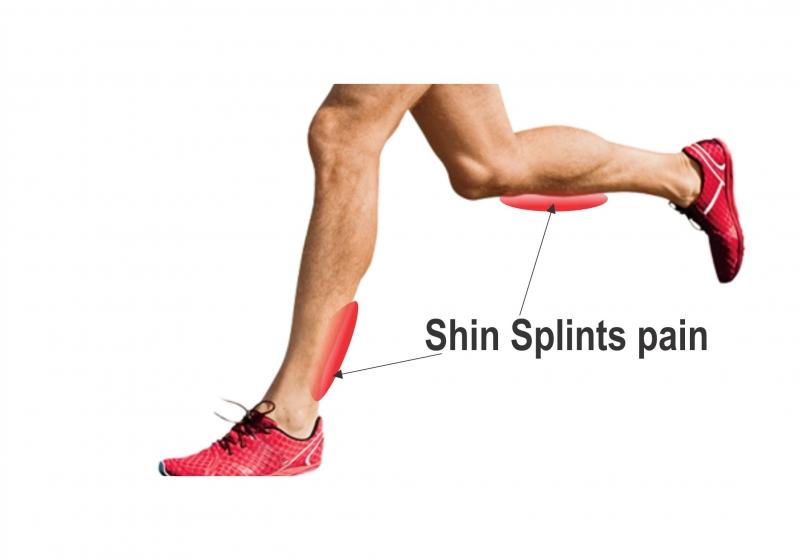
Shin Splint is the pain along with shin bone, i.e. tibia which is the larger bone in front of your lower leg. It is medically termed as tibial stress syndrome which is very common in dancers, runners and military recruits. For treatment for Shin Splints in Gurgaon book your appointment at PAL Physiotherapy.
This syndrome occurs more often in athletes who suddenly change their training routines. Owing to the increment in their working activity the tendons, muscles and bone tissues might get overworked. It is actually a cumulative stress disorder owing to repetitive stress to bones joints and muscles.Shin splint is a common condition in people who perform a lot of running activities. It is not a serious condition however you should stop exercising instantly when you feel the pain. If you ignore, it may get worse.
There are mainly two types of shin splints:
Anterior shin splint
It is primarily located in front part of the shin bone and relates to tibialis anterior muscle. This muscle actually lifts and lowers the foot and medically this type of shin splint termed as anterior tibial stress syndrome.
Posterior shin splint
This type of shin splint is located in an inner part of the shin bone and relates to tibialis posterior muscle. It is medically termed as medial tibial stress syndrome.
The exact cause of shin splint is not understood but involves many issues. The primary cause of shin splint is linked with repetitive activities which cause stress on shinbone and many other connective tissues. Shin splint occurs when you tendons and leg muscles are tired. Mostly people with flat feet, athletes, dancers and rigid arches suffer from shin splint. Many activities, as well as physical attributes, can lead to shin splint pain. Some of them include:
If a person suffers from shin splint, then he will experience pain in front of the outer leg below the knee. Discomfort caused by shin splint is described as dull at first, but afterwards, the pain becomes so extreme and influences your workout. Some of the main symptoms of Shin splint include
The diagnosis of shin splint is basically done on the basis of the medical history along with a physical examination by the doctor. In some severe cases, imaging test along with X-ray is required to identify other possible causes of the pain such as a stress fracture.
The best option for Shin Splints treatment in Gurgaon is physiotherapy which is relatively straightforward and prognostic treatment of this condition. The physiotherapist will check the severity of the injury and then focus on reducing inflammation and pain through Ultrasound therapy, Tense therapy, Heat or Ice Packs, Dry Needling Therapy. The therapist will observe the cause of the shin splint pain and as per the situation start an exact treatment plan. Majority of spin splint patients recover after five to six weeks of physiotherapy treatment of Shin Splint in Gurgaon. Some typical therapies include
You can start out the regular workout after some weeks once the pain is gone. However, keep in mind not to increase the activity level suddenly as it can reoccur if ignored. There are many ways by which you can prevent reoccurrence of shin splint.
The main cause of shin splint is known to be not giving your body proper rest. We should offer ample time amid workouts to repair few broken down muscles. Resting between exercises is the most significant preventive measure which should be followed. There are many measures which should be taken to prevent shin splint:
